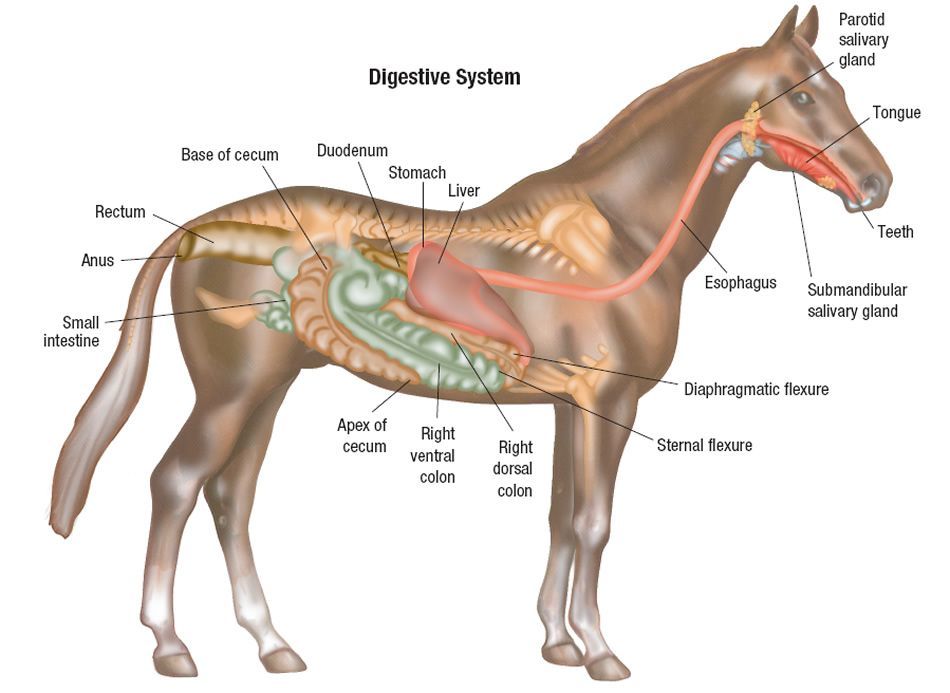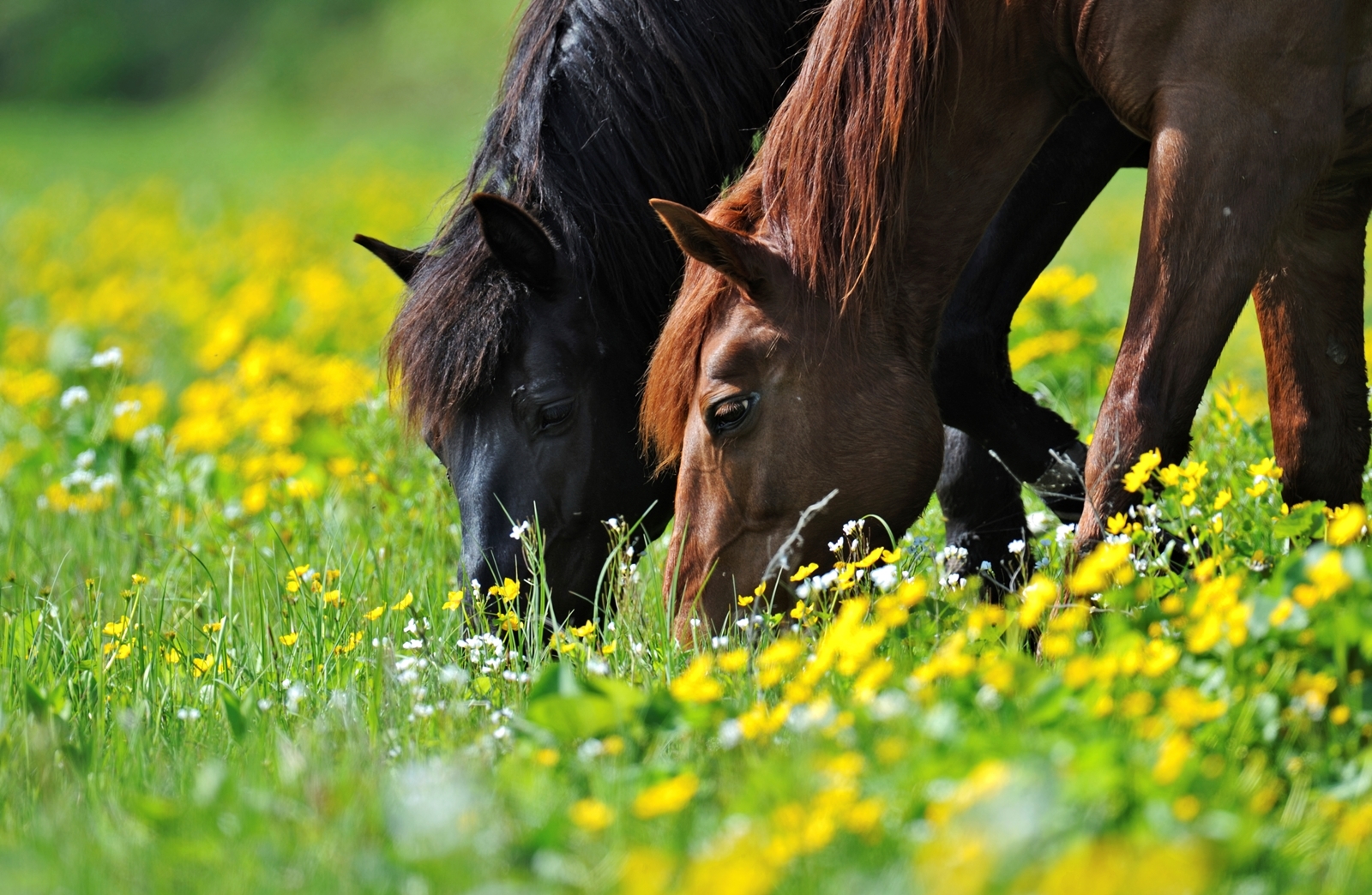As we move closer towards Spring here in the Southern Hemisphere, it's a timely reminder that our horses' activity, nutritional needs and saddle fit will change and therefore should all be addressed. We recently chatted with Leslie Williamson, Director and Senior Lecturer at the National College of Traditional Medicine (NCTM) for Equine and Companion Pets. Leslie shared with us some insight in equine digestion, nutrition, and the best way to manage it to provide the best for your horse.
Q. WHAT SHOULD I FEED MY HORSE?
When you understand what’s in feed, the whole idea of feeding your horse becomes a lot simpler, and more constructive. Rather than discuss whether feeds are 'good' or 'bad', you can instead think about the relative merit of each feed, and can begin to make reasonable choices about what you are going to feed your horse, and why.
Q. WHAT HAPPENS DURING DIGESTION?
Horses are herbivores, meaning they are designed to eat plant life. There are two kinds of domestic herbivores - ruminants and non-ruminants. Ruminants include cows, sheep and goats. Non-ruminants include horses and donkeys. Non-ruminants (equines) digest their food slowly, the wave-like muscular action along the entire digestive tract is a part of the ingested food fermenting as it's broken down, hence why we call horses 'hind-gut fermenters'. Fermentation is very important for all herbivores. Plant material is coated with cellulose and it is impossible to digest via the method of digestive juices breaking it down. Animals that eat plants must host large numbers of bacteria that break down the cellulose for them. Horses have a very large caecum, which is the same organ as the human appendix. This is where the ‘good’ bacteria live. Without these natural bacteria processes taking place a horse cannot digest its food and take up the required nutrients efficiently.

The optimisation of ingested plant life (roughage) converting digestive nutrients into carbohydrate energy is vital to the horses’ development and the energy required of them. The stomach of the horse, although small, allows for the continuous ‘trickle feeding’, and the small and large intestines is where the digestion of protein, fats, carbohydrates along with nutrient uptake of minerals and vitamins takes place. Once you understand the digestion processes, the importance of pasture and what to add to their diet becomes a lot simpler.
Q. SHOULD WE CONSIDER DIET DIFFERENTLY FROM WINTER TO SPRING?
As we come into August, the last month of Winter, some areas of Australia will already be shining with hints of Spring in the air. This is the time to be considering the changes that may be required with our horses Winter diet and the transition into what the Spring season may mean to some horses in the various areas of Australia.
Horses who are kept on pasture, full time or part-time, will love all that Spring has to offer. With increased daylight hours and sunshine to warm their bodies. increased hormonal activity and the return of the abundance of grass varieties.
The environment in which we keep our horses may not allow for many horses to have the opportunity or time in a paddock to walk, forage and reap the natural benefits of plant life. In some areas of Australia, the Winter months can be just as hard as the dry-drought months of Summer. For the working horse regardless of the season, their condition is usually maintained well due to the consistency of their work, where not much will change with these horses as the seasons change. For other horses the wet, cold, winter months tend to be a time to reduce their work or spell the horse for a month or two. However, there are important key points to note for horses coming back into work, in order to transition as smoothly and effortlessly as possible.
Q. WHAT EFFORTS SHOULD WE MAKE WITH SEASONAL TRANSITION?
All changes should be made gradually over a few weeks, this includes the way they may be housed differently, their diet and exercise.
• Exercise should be introduced gradually and with variety of cross-training activities to avoid repetitive strains.
• The musculature should re-develop evenly. Full body massage treatments will benefit the musculo-tendon-skeletal function, flexibility and strength when returning to work.
• A saddle fit check is equally as important to rule out uneven compensations leading to pain and discomfort, which left untreated will lead to biomechanical dysfunction.
• Hoof balance and function are also equal to ensure biomechanics are at their optimum best, regardless of where you live or if your horse is in consistent work or returning to work.

Q. WHAT ABOUT NUTRITION?
Nutrition falls into three main categories:
1. Basic Nutrition: we can relate to basic nutrition as maintenance nutrition, changes to their diet coincide easily with their work and the pasture seasons.
2. Therapeutic Nutrition: designed to aid in a specific condition, to have a healing effect resulting in an overall healthier disposition.
3. Preventative Nutrition: preventive measures to ensure health is maintained from what are probable conditions and/or diseases prone to a particular horse.
These three categories must be considered when discussing any form of nutrition as they form the foundation when attempting to debate the value of nutrition, and relating it to a species-specific diet.
The horses age, sex, breed, height, weight and exercise regime need to match the nutrition category and the energy levels being asked of them. The exercise regime needs to be consistent for the horse to maintain fitness and performance levels. Pasture, along with hay and chaff products form the foundation roughage for our Equine herbivores. Everything else we wish to add should be considered as concentrates. Concentrate examples are; oats, barley, corn, lupins, linseed meal and sunflowers seeds. Concentrates can be abundant in commercial bagged feeds or can be chosen and added individually to compliment a diet. They should never be the main source of a diet. The best thing about concentrates is that we can alter the amounts as required with the seasons and training schedules. Taking the time to compare feed labels is worth it, to ensure you are not doubling up on purchased feed sources that may ultimately end up as very expensive excreted waste! Horses are capable of such athletic prowess and ideally nutrition is the foundation for them not just to survive but also to thrive in the closest and most natural species-specific way possible.
Q. ANY OTHER SEASONAL TRANSITION ADVICE?
As our horses are coming into the last month of Winter and before Spring has sprung, it is an ideal time to do an overall health check of your horses’ body, inside and out. Standing back and looking at the overall health and posture of your horse from head to hoof with fresh eyes, should be done regularly. Note any changes you are seeing in the coat, posture, muscle development, hoof wearing and saddle area. If there are obvious visuals then take a photo. This is an honest way to keep record of your observations and to share with the professionals you approach to help with any issues.
Remember happy horse, happy rider! All the best for the end of Winter and the blossoming of Spring.
Interested in learning more about Equine Health and Nutrition? Browse NCTM equine health courses HERE
Need to book in for a seasonal saddle fit? Fill in our online Saddle Fitting Form or email us saddlery@horobin.com.au